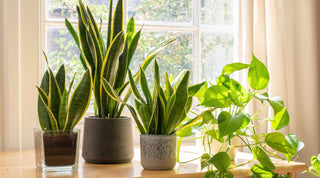As a new year unfolds, January presents a unique set of opportunities for beginner gardeners to kickstart their gardening journey.
While the chilly weather in many regions might suggest a dormant period, there's still plenty to do and plant. Here’s your guide to making the most of your garden in January.
Planning and Preparation: The Foundation of Gardening
Before you start, it's crucial to plan. Use this quiet time to think about your garden layout and what you want to achieve in the coming year. Research plant varieties, garden designs, and the needs of your local ecosystem. If you haven't already, invest in a good gardening journal to track your progress and experiences.
Soil Care: The Heart of Your Garden
January is the perfect time to prepare your soil. Begin by clearing any debris and weeds. If the ground isn't frozen, you can dig in well-rotted manure or compost to enrich the soil. This process, known as soil amendment, will provide essential nutrients for your plants later in the year.
Pruning and Maintenance: Keeping Your Garden Healthy
Pruning isn’t just a task for the warmer months. For certain plants, January is the ideal time to prune because it can stimulate growth in spring. Focus on dormant trees and shrubs, but avoid spring bloomers as you might cut off their flower buds.
Planting: What Works Best in January
-
Bare-root plants: January is the best time to plant bare-root trees and shrubs. This includes fruit trees, roses, and some ornamental trees. Planting them now allows them to establish their root systems early.
-
Winter Vegetables: In milder climates, you can still plant winter-hardy vegetables like kale, spinach, and chard. For colder areas, consider using a greenhouse or cold frame to protect young plants.
-
Garlic and Onions: These are great to plant in January, as the cold can actually improve their flavor.
- Flowers for Early Spring Bloom: Start bulbs like snowdrops and winter aconites in pots or sheltered garden spots for an early bloom.
Protecting Your Garden: Battling the Cold
In colder regions, protection is key. Use mulches like straw or leaf mold to protect plant roots from freeze-thaw cycles. If you have planted new trees or shrubs, consider using burlap wraps to shield them from harsh winds and frost.
Indoor Gardening: Keeping Your Green Thumb Active
Don’t forget about indoor gardening. January is an excellent time to start seeds indoors, especially for slow-growing plants like tomatoes and peppers. Invest in a good quality seed starting mix and consider grow lights if your home doesn’t get enough natural sunlight.
Wildlife Care: Supporting Your Garden Allies
Finally, think about the wildlife that supports your garden. Birds can play a crucial role in pest control, so consider setting up bird feeders to help them through the winter months. This also gives you a wonderful opportunity to observe and learn about local wildlife.
Conclusion
January might seem like a quiet month for gardening, but it's actually filled with potential. By planning, preparing, and engaging in early planting and maintenance, you can set the stage for a successful gardening year. Embrace this slower time to learn, plan, and dream about the lush, vibrant garden you'll cultivate in the months to come. Remember, every great garden starts with a single seed – and a bit of January foresight!



